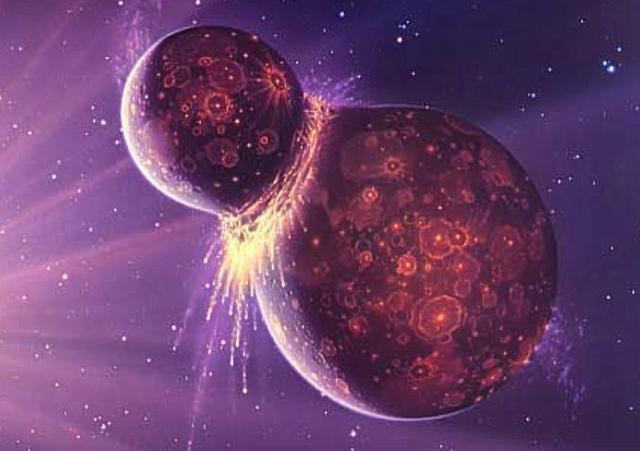
The prevailing model of solar system formation suggests that, in the inner solar system, small bodies formed rapidly and then began to form larger ones through a series of collisions. For the original Earth, this ended with a big one: a run-in with a Mars-sized body that completely melted the planet and left enough debris in orbit to form the Moon. Most dating methods place this collision at 30 million years after the formation of the solar system, but a few recent measurements have suggested it might have occurred as late as a hundred million years after its formation. A new model that takes into account the distribution of various metals in the crust now suggests that the Moon-forming giant impact (MGI) could have occurred much later—but only if the Earth formed more quickly than expected.
The primary method of dating the age of early events like this is the ratio of tungsten (W) isotopes in the crust. The amount of 184W has been stable since the start of the solar system. 182W, however, forms from the decay of a radioactive form of hafnium that has a half-life of 9 million years. As long as the Earth's interior isn't mixed, decay of hafnium will produce an excess of the lighter tungsten isotope, at least within the first 50 million years or so, after which point there wouldn't be much left to decay.
Each of the major impacts, however, would remix the crust and allow metals to sink to the core, essentially resetting the clock. Each time the clock was reset, there was less hafnium to decay, and so less 182W would be produced. Dating using this technique is what produced the 30 million year age of the MGI.
Unfortunately, applying a similar technique to moon rocks produced a very different date: between 50 and 150 million years after the formation of the solar system. A different isotope system (Rb-Sr) also produced a later date of formation.
To try to sort out the discrepancies, a pair of Harvard researchers built a model of the Earth's formation, one that included accretion from collisions of small bodies as well as a single giant impact. It handled thermodynamic mixing, redox reactions among metals, and tracked the growing body's iron content, along those of other minerals. They then played around with the timing of events: how rapidly accretion occurred, when it stopped, and how long after that the MGI occurred. "To be considered successful," they write, "a model of Earth’s accretion must satisfy the present isotopic composition of the Earth’s mantle." In other words, they tested different timelines to determine whether any of them could produce a model Earth that actually looks like our current one.
Their model indicates that the distribution of minerals we see wouldn't have occurred unless the Earth was thoroughly mixed through the formation of a planet-wide magma ocean. Fortunately, the collision with the Moon did just that.
The standard model of Moon formation, with a collision at around 30 million years after the formation of the solar system, is possible in their models. A later one, however, is also possible—their models could work with the formation of the Moon being as late as 100 million years post-formation. However, to get that to work, the Earth had to be put together very quickly—accretion of material would have had to be complete by about 11 million years. There are a range of possible alternatives between the two, but the trend is clear: the later the MGI, the earlier the Earth had to have formed.
All of this, however, is meant to match the model results with the Earth's composition. Recent evidence (probably published after this paper was in the works), has suggested that some of the Earth's minerals were deposited by meteors after the MGI took place. That, in turn, would suggest that the modern crust might not be what they should be aiming for in their models.
In any case, the model at least suggests that there may be a fairly broad range of ages that are compatible with the formation of the Moon. It may take real-world data to eventually sort out which of these dates is likely to be the correct one.
PNAS, 2011. DOI: 10.1073/pnas.1108544108 (About DOIs).
Listing image by Photograph by NASA
reader comments
48